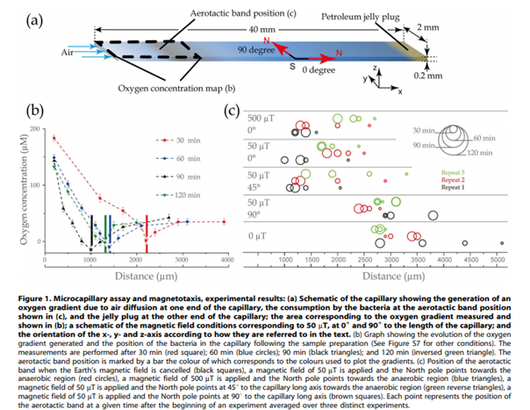Influence of Magnetic Fields on Magneto-Aerotaxis
Abstract
The response of cells to changes in their physico-chemical micro-environment is essential to their survival. For example, bacterial magnetotaxis uses the Earth’s magnetic field together with chemical sensing to help microorganisms move towards favoured habitats. The studies of such complex responses are lacking a method that permits the simultaneous mapping of the chemical environment and the response of the organisms, and the ability to generate a controlled physiological magnetic field. We have thus developed a multi-modal microscopy platform that fulfils these requirements. Using simultaneous fluorescence and high-speed imaging in conjunction with diffusion and aerotactic models, we characterized the magneto- aerotaxis of Magnetospirillum gryphiswaldense. We assessed the influence of the magnetic field (orientation; strength) on the formation and the dynamic of a micro-aerotactic band (size, dynamic, position). As previously described by models of magnetotaxis, the application of a magnetic field pointing towards the anoxic zone of an oxygen gradient results in an enhanced aerotaxis even down to Earth’s magnetic field strength. We found that neither a ten-fold increase of the field strength nor a tilt of 45u resulted in a significant change of the aerotactic efficiency. However, when the field strength is zeroed or when the field angle is tilted to 90u, the magneto-aerotaxis efficiency is drastically reduced. The classical model of magneto-aerotaxis assumes a response proportional to the cosine of the angle difference between the directions of the oxygen gradient and that of the magnetic field. Our experimental evidence however shows that this behaviour is more complex than assumed in this model, thus opening up new avenues for research.






